How to set up a business partnership

A business partnership is a legal relationship in which two or more people agree to create and run a business together, sharing ownership and profits. There are different types of business partnerships and you need to make sure that you set up a business partnership right for your situation.
Setting up a partnership has a lot of advantages, but can be a little confusing at points. In this article, our accountants will explain how to set up a business partnership and what you need to do going forward. If you are not sure whether this type of business arrangement is right for you or your business, it’s always good practice to consult a professional before proceeding.
Whether you’re an individual or a business, making decisions about your partnerships can be time-consuming. Here at Joanna Bookkeeping, we are committed to helping explain different options and to discover which one could be best for your partnership. Plus we can offer support when it comes to tax returns and other accounting and bookkeeping aspects, so you can focus your time and efforts on your business. Contact our Oxford accounting office to arrange an initial chat about your needs.
If you’ve decided to set up a business partnership, there are a few important factors to consider before deciding on the best course of action. Let’s look at some important points to help you get started.
How to set up a general partnership
In this section, we’ll go through the steps of how to set up a general partnership.
To set up a general business partnership you need to:
✅Choose a name for the business
You don’t need to register your business under a particular name. It is your choice whether you trade under a partner’s name, your own name, or another name for your business. But make sure to include all partners’ names and the business name on official paperwork, this includes your sales invoices.
Your business partnership name needs to be unique. It can’t be the same as an existing trademark, and you’ll need to register your name as a trademark if you want to protect it from being used by others.
Also, your name shouldn’t include the words ‘limited’, ‘Ltd’, ‘limited liability partnership, ‘LLP’, ‘public limited company’ or ‘plc’.
✅Choose a nominated partner and register the business partnership with HMRC
Whoever is the nominated partner is responsible for dealing with the tax returns of the partnership and keeping business records for the business. The nominated partner has to register the partnership for Self-Assessment. They also have to register themselves as an individual. These are two separate registrations. Other partners have to register themselves as individuals as well but they don’t have to register the partnership as this is done just once by the nominated partner.
Start your business with clarity and confidence.
Starting your own business doesn’t have to be confusing and overwhelming.
Grab this FREE Business Start-Up Pack and start building your dream business today.

How to set up a limited partnership
Limited partnerships are not too different from general partnerships. Still, one of the main differences is that a limited partnership needs to have at least one general partner who is responsible for managing the day-to-day activity of the business.
To set up a limited partnership you’ll need to:
✅Choose a name for the business (the same rules as choosing a name for a general partnership apply)
✅Register an address (known as the principal place of business)
The address that you use to register the business is where all legal and official documentation will be sent, such as communications from HMRC, etc.
The registered business address must be a physical address that’s the main place of business, in the same country that the limited partnership is registered (although, once your business is incorporated you can relocate anywhere in the UK)
You can also use a home address, but it’s important to understand that the address will be available to the public.
✅Decide who the general and limited partners will be
To form a limited partnership, you need at least one general partner and one limited partner (a partner can mean either an individual or a company)
The type of partner you are makes a difference when it comes to things like responsibilities, and your liability for the partnership’s debts. And by law, you can’t be a general and a limited partner simultaneously.
✅Register the business with Companies House
You can download and fill in the application to register a limited partnership via the HMRC website. Each individual partner needs to sign the application before it’s sent.
Once you’ve made your application for a limited partnership, send it by post with a fee of £20 and you can normally expect Companies House to register your limited partnership within 5 days of getting your application.
✅Register the business for Self-Assessment
Although a limited partnership is registered with Companies House, it’s not liable to corporation tax like a limited company. Instead it has to submit tax returns using Self-Assessment. A general partner is responsible for registering the partnership for Self-Assessment. Additionally, each partner has to register themselves for Self-Assessment. In this respect, this partnership is very similar to a general partnership.
How to set up a limited liability partnership
This type of partnership is similar to a limited company as it gives partners a limited liability for the business’s debts.
To set up a limited liability partnership you need to:
✅Choose a name for the business
The same rules as choosing a name for a general partnership apply. However, you can’t choose a name that might be considered the ‘same as’ or ‘too like’ an existing name registered with Companies House. You can find more information about choosing a name for a limited liability partnership on the HMRC website.
✅Register an address (the same rules as registering an address for a limited partnership apply)
✅Have at least 2 ‘designated members’
A limited liability partnership has two types of members: ordinary and designated. There can be any number of ordinary members. However, you must have at least 2 designated members at all times – they have more responsibilities (for example, keeping company accounts).
✅Have an LLP agreement that says how the LLP will be run and register the LLP with Companies House
It’s advisable to have a solicitor who can help you create an LLP agreement, but it’s not a legal requirement and you can write your own.
To register a limited liability partnership with Companies House, you can ask an agent for help or you can do it yourself. You can do it either by post which will take a bit longer or use approved software. The registration via software is quicker but may incur higher costs. Once you register, Companies House will send you a certificate of incorporation.
Additionally to registering the partnership with Companies House, each member has to register for Self-Assessment. The partnership doesn’t pay corporation tax.
What is a partnership agreement?
When setting up a business partnership, it’s advisable to draw up a partnership agreement. A partnership agreement is a document that explains the terms of your relationship with your business partners. It may also be called an operating agreement or shareholders’ agreement. The purpose of this document is to clearly lay out the rights and responsibilities of each partner in your business partners so that there’s no room for misunderstanding or conflict in the future.
The agreement isn’t mandatory but if you don’t have one in place, the legislation will rule certain aspects of the partnership, for example, how the profits are split. So our accountants highly recommend to draw one up.
Even if a partnership agreement is in place, the business must be able to change with the times. If a partner retires or dies, or if new partners join, a new agreement must be drawn up to accommodate any changes that affect ownership and decision-making power.
Creating a partnership agreement helps ensure that you and your partners understand how the business will be run. It also sets out important information such as:
- How profits are shared among members/partners
- Who needs to agree on decisions
- Member’s/Partner’s responsibilities
- How members/partners can join or leave the partnership
Hopefully, this article has helped to give you a deeper perspective of what’s involved in setting up a business partnership.
If you have any specific questions related to the topics covered, get in touch with us at Joanna Bookkeeping to see how our Oxford-based accountants can help you save time and energy on accounting and bookkeeping responsibilities for your partnership.

Your Accountant in Oxford
Oxford Office
Joanna Bookkeeping
The Wheelhouse Angel Court
First Floor, Angel Court
81 St Clements St
Oxford
OX4 1AW
Connect
joanna@joannabookkeeping.co.uk
01865 591952





